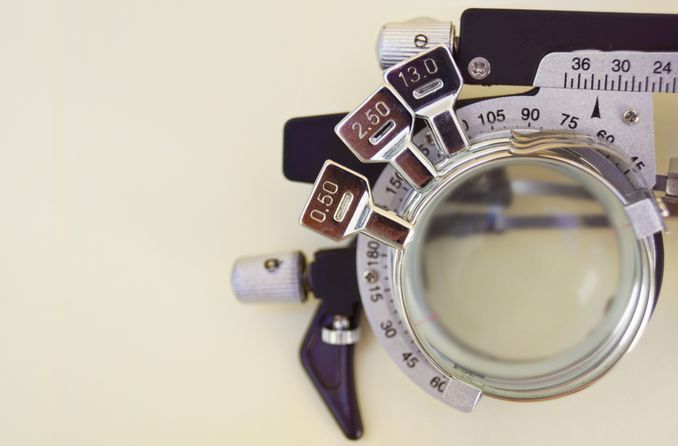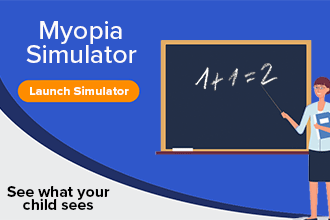High myopia: severe nearsightedness

What is high myopia?
High myopia is the medical term for extreme or severe shortsightedness. Myopia is a type of refractive error, and lens prescriptions for refractive errors are measured in units called diopters. A person who needs a vision prescription of -6.00 diopters (D) or more has high myopia.
High myopia can exponentially increase a person's risk of developing sight-threatening eye diseases. It's very important to manage myopia progression during childhood, before it becomes high myopia.
Myopia progression and stabilisation
Myopia typically begins during early childhood and progresses over time. The peak years of myopia progression are estimated to be between ages 7 and 15.5. However, it can begin earlier and last longer.
The earlier a child develops myopia, the greater the progression and the greater the chance of developing high myopia.
For about 50% of people, myopia stabilises by age 15, but it can progress until around age 24 for others. If it progresses to a measurement of -6.00 D or greater, that is considered high myopia. Low and moderate myopia fall between -0.25 D and -5.75 D.
SEE RELATED: Is your child at risk for myopia?
High myopia causes
Shortsightedness primarily occurs as the result of a slightly elongated eyeball shape. When the eyeball is too long, light focuses too far in front of the retina. This causes distant objects to look blurry.

People with high myopia have a longer eyeball shape than people with low or mild myopia. This means light focuses even farther away from their retinas and makes distance vision extremely blurry.
Inherited genes can play a role in the development of high myopia. Children have a greater risk of developing the condition when one or both parents have nearsightedness.
Severe myopia does not generally lead to vision loss on its own. Instead, the progressive lengthening of the eyeball stretches and thins the retina and other eye tissues. This makes them more vulnerable to damage and disease.
Studies have shown that the risk for these complications increases drastically the more myopic a person becomes:
Glaucoma (3x higher risk)
Cataracts (4.5x higher risk)
Retinal detachment (12.62x higher risk)
Myopic macular degeneration or myopic maculopathy (845x higher risk)
People with high myopia are also at an increased risk of developing pathological myopia.
Pathological myopia (also called malignant or degenerative myopia) is not as common as low or high myopia. It affects only about 3% of the world’s population. Even so, it is the seventh leading cause of legal blindness in America. In pathological myopia, progression and loss of vision can be quick and severe.
It’s essential that people with high myopia have routine dilated eye exams. Their optometrists need to monitor them for signs of any complications caused by high myopia.
If your child's myopia is worsening, ask your optometrist about the myopia control methods available in your area. Myopia control can slow or halt the progression of shortsightedness.
Myopia stabilization and associated factors among participants in the Correction of Myopia Evaluation Trial (COMET). Investigative Ophthalmology & Visual Science. December 2013.
IMI pathologic myopia. Investigative Ophthalmology & Visual Science. May 2021.
The complications of myopia: a review and meta-analysis. Investigative Ophthalmology & Visual Science. April 2020.
Choroidal neovascular membrane in degenerative myopia. Retina (4th edition). Mosby. 2006.
Page published on Friday, 28 June 2019
Page updated on Tuesday, 28 March 2023
Medically reviewed on Tuesday, 10 May 2022







